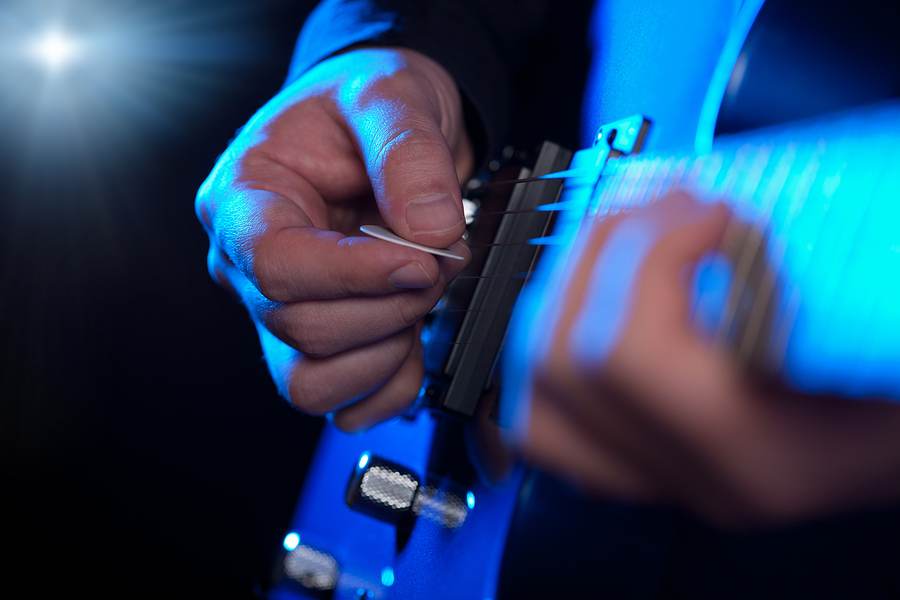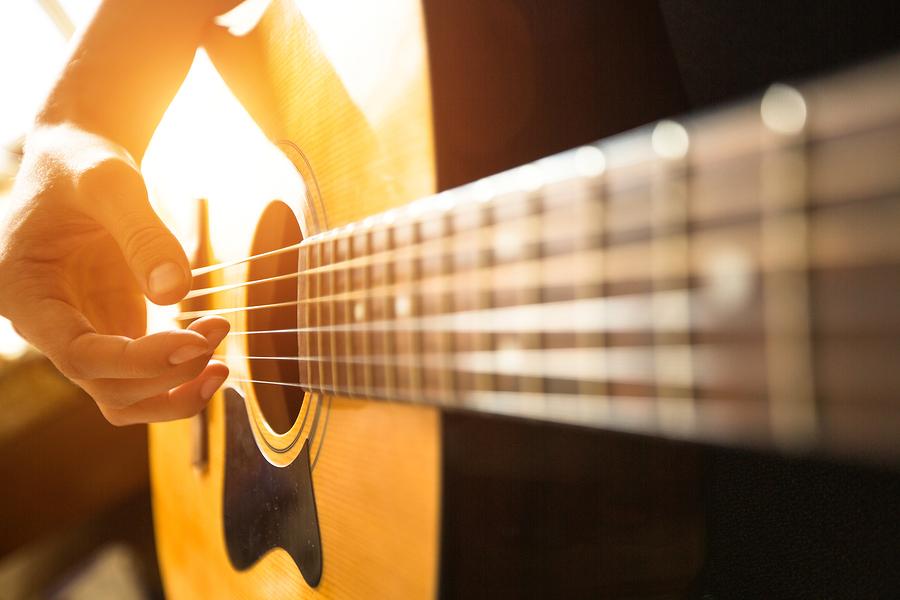May 29, 2025 by Klaus Crow
8 Most Important Open Guitar Chords For Beginners

Basic Open Guitar Chords for Beginners
Where do you start when you want to learn to play guitar? Well, the first thing you want to do is learn is some basic open guitar chords, a basic strumming pattern and then start practicing some beginner songs, so we’ll start out with some basic open chords.
The chords are the building blocks for your songs, they give you the harmony. The strumming delivers the rhythm and together they are the accompaniment for your or someone else’s singing voice which in turn provides the melody.
The 8 most important chords for beginners are: C – A – G – E – D – Am – Em – Dm. (you can memorize the first 5 open major chords by the word CAGED)
Songs with Beginner Chords
With these simple chords alone you can play an endless amount of easy songs. For example there are about a million songs that use this chord progression: G – D – Em – C (also called the I – V – vi – IV progression).
Songs like “I’m yours” by Jason Mraz, “With or without you” by U2 and “She will be loved” by Maroon 5 can all be played with just these 4 chords. Not all of these songs are originally in the key of G but you could easily fix that with the help of a capo and play it in the appropriate key.
The open chords are also the starting point and components for the more advanced chords that follow like barre chords. All barre chords are derived from open chords. If you’re interested check out The Four Most Essentiall Barre Chords.
How to Play The Beginner Guitar Chords
In the video lesson below I’m going to show you how to play each chord correctly step by step and how and where to put your fingers on the strings.
Continue Reading The major pentatonic scale is mostly used in country, folk country rock, blues and jazz.
The major pentatonic scale is mostly used in country, folk country rock, blues and jazz. Somewhere along the way of your guitar adventure there comes a moment when you think about what you want to do or who you want to be as a musician.
Somewhere along the way of your guitar adventure there comes a moment when you think about what you want to do or who you want to be as a musician. A lot of guitar players tend to practice less or quit practicing altogether once they get older and gain more responsibility in life.
A lot of guitar players tend to practice less or quit practicing altogether once they get older and gain more responsibility in life.